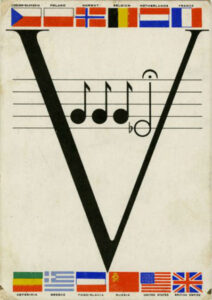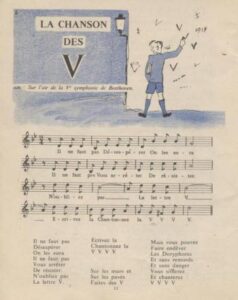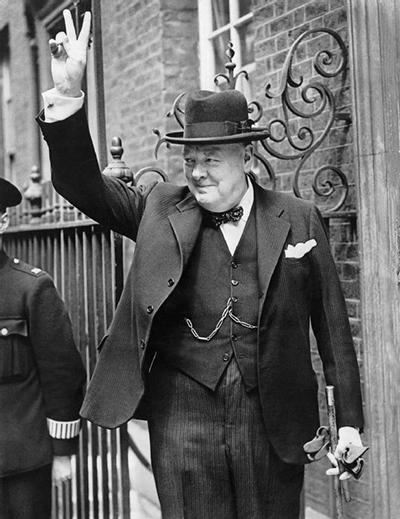How Morse code, the letter V and the opening four notes of Beethoven’s Fifth Symphony saved the world in World War II? Read on to find out!
The Morse code
In the 19th-century news and information still travelled slowly. There was desperate need for faster communication! Three Americans, Samuel F. B. Morse, Joseph Henry, and Alfred Vail, a painter, a physicist and a mechanical engineer, came up with an idea. They used electrical signals and simple devices to send and receive them. The invention was a package: the idea of using electrical pulses and silence as communication, the devices to make and receive these signals, and finally a code table with corresponding alphabet. They started working on the invention in the 1830s and the first telegram was sent in 1844.
The pulses are two kinds, short (a dot) and long (a dash). As it happens, in the Morse code the letter V is created by three short and one long pulse:
. . . –
Di-di-di-dah. Familiar…?

The letter V in the Second World War

It all started with the exiled Belgian politician Victor de Laveleye. In 1941, he was a guest on one of BBC’s European Service broadcasts and proposed to use the letter V as a symbol for resistance, freedom and ultimately victory. Initially, he was thinking about his people only, the Belgians, who were under Nazi occupation. He called for Vs chalked everywhere to show the occupiers the force of the resistance.
The sign V soon was everywhere! First, in occupied territories, including France and The Netherlands. Realizing the propaganda value in this simple sign, by the proposal of Douglas Ritchie (Colonel Britton), the BBC launched their own campaign called V for Victory. The V spread like wild fire. It was on walls, on cloths, tanks…everywhere!
Nobody made bigger impact in this campaign than Winston Churchill, who started using the V as a hand gesture (two-finger form) from July 1941. He said, “The V sign is the symbol of the unconquerable will of the occupied territories and a portent of the fate awaiting Nazi tyranny.”
The first four notes in Beethoven’s Fifth combined with the V
It was only natural, that soon the letter V, and what it symbolizes, combine forces with Beethoven’s Fifth Symphony. As it turns out, the Fate Symphony really has something to do with fate!
Letter V in Morse code is di-di-di-dah, which happens to be the opening motif of Beethoven’s Fifth Symphony, which happens to be a symphony about struggle and victory, which symphony also happens to be his fifth, that is V in roman letters! Destiny? Fate? Coincidence?
The V and its audio companion became part of everyday life during the war. From simple knocking on doors, to calling the waiter in a restaurant, teachers clapping to silence children, even church bells. The V and Beethoven was everywhere! Most importantly, it was the radio signal of BBC broadcasts all over the world, sending the di-di-di-dah hundreds of times every day! Before long, it became the universal symbol of the Allied war effort.
Listen to the original BBC signal made with timpani!
Nazi Germany, always clever and crafty with propaganda, could not manage the situation. Initially they banned the V and even considered using it a sabotage. More annoying was the fact that now Beethoven, whom Nazis tried to use as symbol of German power and creativity, was on the other side!
One famous adaptation of the V comes form France, where Maurice van Moppes, during the worst German bombing of London in 1941, made lyrics to the Fifth and called it ‘La chanson des V’ (The song of V).

The original lyrics in French (first stanza)
Il ne faut pas
Désespérer
On les aura
Il ne faut pas
Vous arrêter
De résister
N’oubliez pas
La lettre V
Ecrivez la
Chantonez là
V, V, V, V
It is interesting to observe how present and contemporary Beethoven is in history. When the Berlin Wall had fallen down in 1989, again ending an era of tyranny, Leonard Bernstein conducted a historic concert to celebrate the event. It was Christmas Day and it was Beethoven’s Ninth Symphony. What else could it be?






